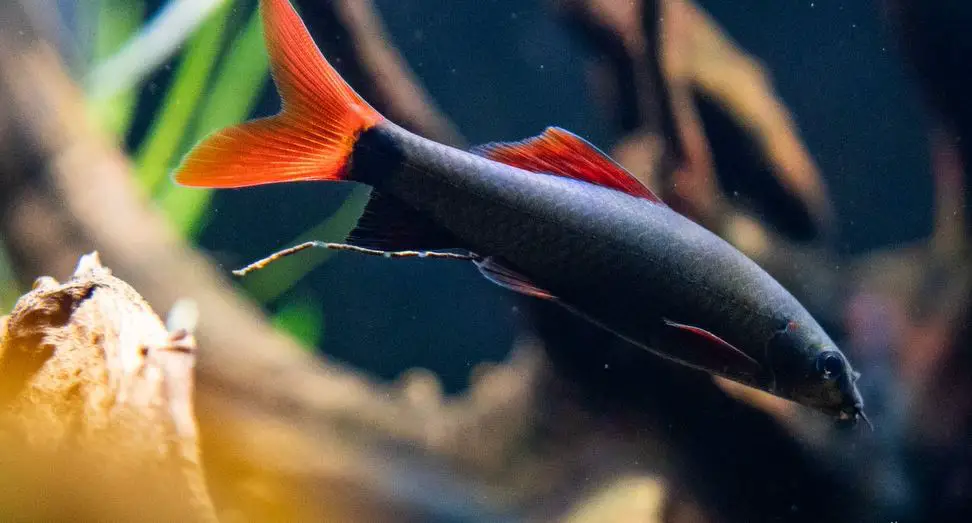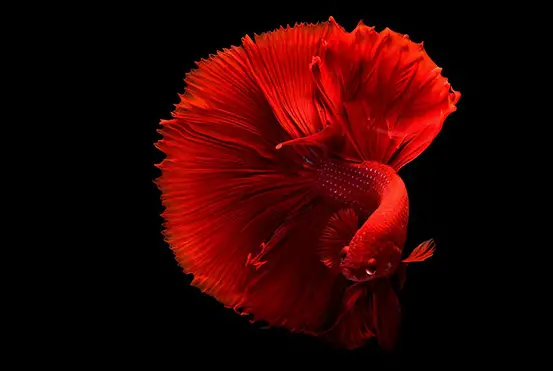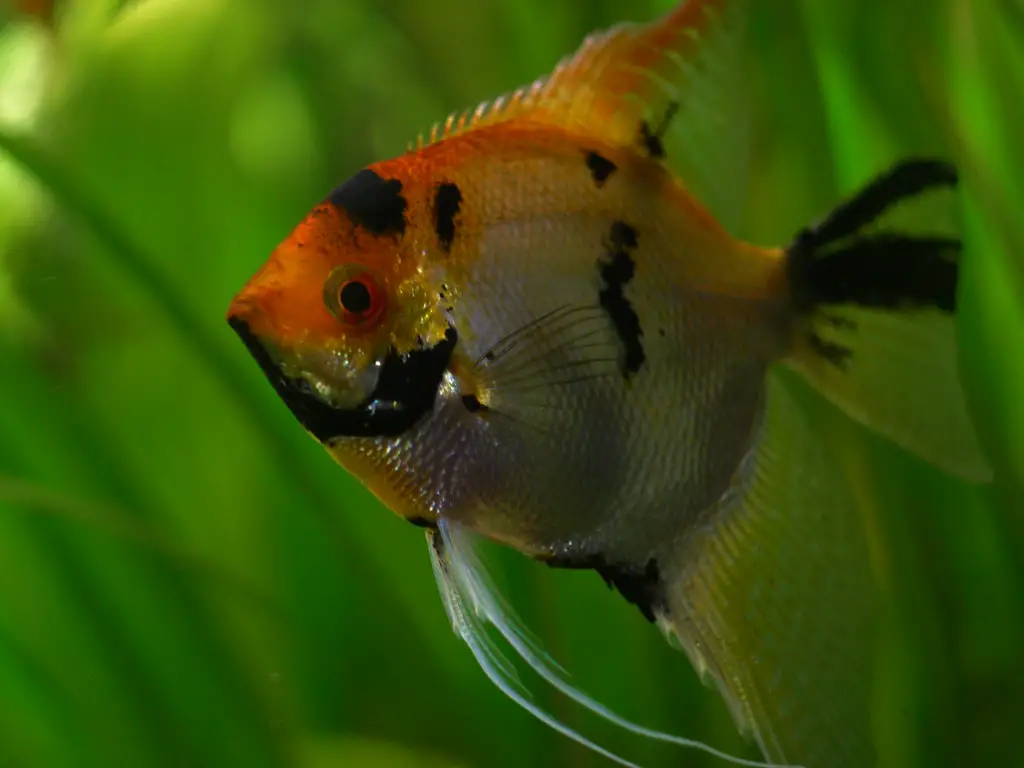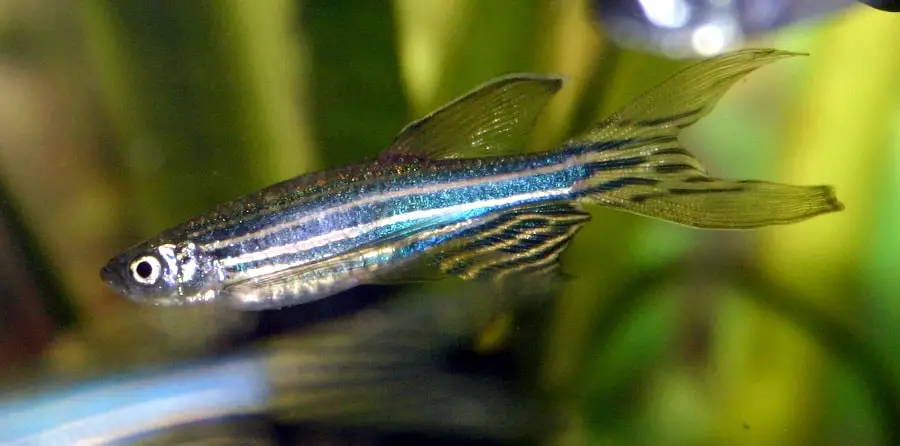Rainbow Shark is also known as RedFin Sharks or Ruby Sharks. They are tropical freshwater fish and are native to Thailand. Rainbow Sharks are well known for their vibrant red fins and being territorial. These bottom dwellers are the best option to add some color and attitude to the aquarium.
They are called Shark because of their appearance as the upright dorsal fin gives the appearance of a shark.
Rainbow Shark originated from the warm rivers of Southeast Asia. The scientific name of RedFin Shark is Epalzeorhynchos frenatum. Rainbow Shark has a very wonderful look. It is a part of the Cyprinidae family, the genus Epalzeorhynchos, and originates in Southeast Asia, Indonesia, and Thailand.
The lifespan of Rainbow Shark ranges from 5 to 8 years. To keep this breed happy and active, adding a lot of rocks and vegetation and driftwood would help because it would help them specific territories and avoid a fight with other species of the fish and tank mates.
Appearance
The Rainbow Shark has a long, flat stomach with a pointed snout and an upright dorsal fin. They are dark gray fish with vibrant red/orange fins. Because of the fin, they got the appearance of a shark.
A matured RedFin Shark is expected to grow up to around 6 inches. It is not possible to identify their gender when they are in the juvenile stage. It is only possible once they are sexually mature. Sexually matured males will develop small black lines on their tail fin while sexually matured females will have thicker bodies.
Albino Rainbow Shark is a common variety of Rainbow Shark. They are not a real shark in the true sense, but they have sharks like bodies and fins. The body is long, and its dominant color is greenish.
The name is “rainbow’ shark because the fins and the tail are brightly colored in shades of fire, beautiful red, and orange combos. There are also very rare white specimens with colored swimmers. The head is elongated, and the eyes are large. They have darkened iris, and the mouth is well developed. They also have two pairs of sensitive mustaches or sensitive sensory antennae that they use to detect food. With the help of these antennae, they probe through the vegetations and go to the bottom of the water in search of small edible organisms. They have a sharp butt and a small head. The mouth has two pairs of barbells and ceratoid.
Rainbow Shark Behavior
The Rainbow Shark is a territorial fish. It can cause certain behavior problems, such as aggression and dominance. Generally, it happens as soon as they get mature. They spend maximum periods of their time hiding as they are timid by nature.
They are also known as aquarium cleaners as they eat the algae growing on the bottom of the tank, and they keep dwelling deep down the tank. RedFin Sharks are rarely peaceful with their own kind and with other species. They get combative. They try to bite other fishes that can cause fin rot. This is why it is essential to give them good space in the aquarium to swim freely.
One of the important facts about the Rainbow shark is that they have the practice to jump that normally happens when they are placed in the aquarium in the beginning.
Rainbow Shark Habitat
The natural habitats for Rainbow Shark are the balmy rivers of Indochina with sandy substrates where they flat in the bottom surface of the water. These fishes are moves a lot around the tank and are also fast swimmers. So the tank should be big enough, so they get no territorial disturbances.
Tank Requirements
Since these sharks are an active swimmer, adult Rainbow Shark needs a minimum of 50 gallons of the aquarium. The aquarium should have enough horizontal space. Aquarium having short length encourages them to become more territorial and aggressive. Keeping more than one Rainbow Shark in a single aquarium is not so recommended. This may require huge space to hide like caves, treated driftwood, and rocks; dense vegetation and plants would also help. Keeping plants helps to get them distracted, and it will reduce conflict and also help to prevent algae. As they can jump, one must make sure that the aquarium lid is fitted well.
Have little experience in fish keeping and still confused on some part of the aquarium setup? Check the article “Fish Tank Setup For Beginners.”
Tank Conditions for RedFin Sharks
It should be within 75-81 degrees Fahrenheit, 6.5 to 7.5 pH level, and water hardness should be 5 to 11DH.
Rainbow Shark should be kept at a stable pH level because sudden changes in pH level tend to cause them to become more aggressive than usual.
The water movement should be moderate to fast as they are used to water that flows with high speed in the rivers, and lighting should be kept at a medium level, which is useful for live plants also.
The temperature of the tank should remain fixed most of the time, as constantly changing temperatures can cause stress to fish.
Check out the article on the aquarium filtration method and Aquarium Nitrogen cycle. These topics are very helpful in setting up appropriate tank conditions for RedFin Sharks.
Rainbow Shark Compatibility and Tankmates
It won’t be a wise decision to keep Rainbow Shark and expect a calm community. If one is looking for an alluring and exquisite breed of fish to add life to the tank, then this breed of fish will be a perfect choice. However, for the inexperienced aquarists, whos are just beginning to have fishes, RedFin Shark is not the ideal breed because they are dominating in nature and gets aggressive in the presence of other breeds. They are extremely territorial, and this can be overwhelming for more shy species such as Marbled hatchet fish and Otocinclus catfish.
As Rainbow Shark keeps dwelling down in the tank, it would be wise to select tankmates that swim in the middle/upper section of the aquarium or can also pick those who can defend themselves from the aggressive nature of RedFin Shark and have a calm but strong personality.
Some of the suitable species to accompany Rainbow Shark are Gouramis, Barbs, Danios, Rasboras, Clown Loach, Plecos, and Rainbowfish. One trick is also to keep Rainbow Shark at last in the aquarium as it helps to prevent to try to claim the entire aquarium as its own and reduce territory related problems.
Rainbow Shark lovers are suggested not to populate the tank with too many fishes; otherwise, the smaller one will get suffered. Also, it would be good to avoid fishes that dwell in the bottom in the tank and who are big enough to defend themselves. It is also good to avoid similar-looking fishes as RedFin Sharks doesn’t like sharing its territory even with its own kind.
Feeding Requirements and Diet
Rainbow Sharks are not very finicky. They are omnivores that mean they eat both meat and plants. In the wild, they generally consume insect larvae, decaying plants, algae, and small chunks of meat that they find in the river, such as zooplankton. They also eat flake food, frozen food, pallets, live food, and also vegetables.
They expect varied dates and expect a variety of food sources, similar to that in the wild. In order to keep a varied diet plan, a diet chart can include spinach, zucchini, peas, lettuce; and it will keep a strong immune system.
If you want these juveniles to grow large with vibrant colors, the diet should be varied and not overly restricted. Lack of variation can cause poor color expression and stunted growth.
Food sessions should be 2-3 sessions a day, and the total length of feeding should be around 5 minutes. If food is left even after this time, it should be understood that feeding is too much, and it will impact the nitrogen cycle.
It is good to feed live food such as insect larvae, Tubifex worms, zooplankton, and small crustaceans, although Rainbow Shark is largely herbivorous fish and prefer to eat algae. For good coloration and longer lifespan, they should be feed with plants mostly. The food should reach the surface of the aquarium as these fishes are bottom dwellers. It is also important to remove organic wastes from time to time.
Breeding
In the wild, Rainbow Sharks tend to mate from October to November. In this time, they reach their sexual maturity. This may also be impacted by changing seasons and depend on the length of the day and temperature. If fish is less than 4 inches in length, this means they are not sexually mature.
Rainbow Sharks reproduce through egg-laying, and the male will fertilize them by spraying the eggs with his milt. The eggs will then hatch within the week and almost 2-3 weeks for the Frey to mature.
Breeding Rainbow Shark in an aquarium is extremely challenging. It hasn’t been bred in the tank condition successfully. It is hard for a Rainbow Shark to tolerate another Rainbow Shark. That is the main reason for the difficulty in breeding for RedFin Sharks. Even though these fishes are egg layers, they would not allow any other fishes in their area.
Also, this breed is a river fish. It is extremely difficult to create such conditions in an aquarium. These complicated requirements, hence breeding them at home, are very unrealistic. Since breeding Rainbow Shark in an aquarium is almost impossible, most of them are bred in fish farms.
Reference
Image Credit: https://www.youtube.com/watch?v=XUpUME1uRkg






